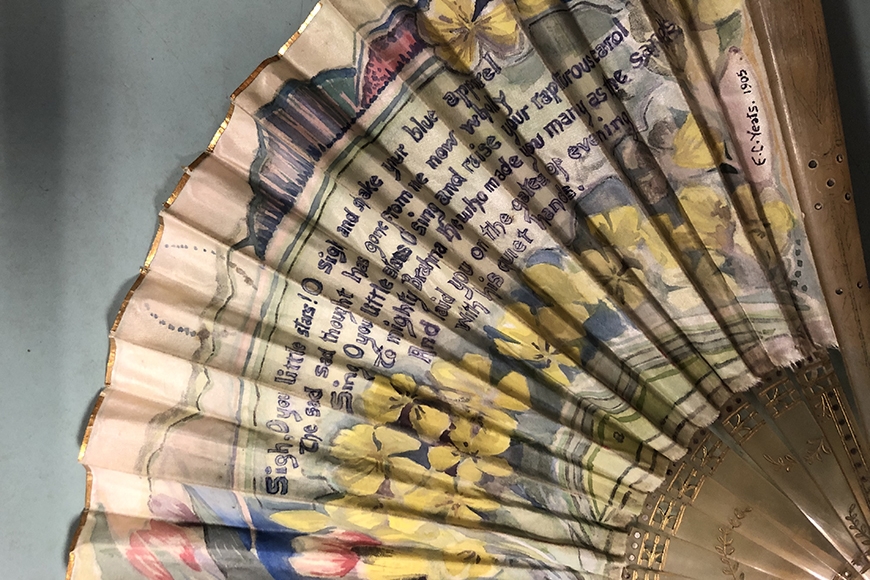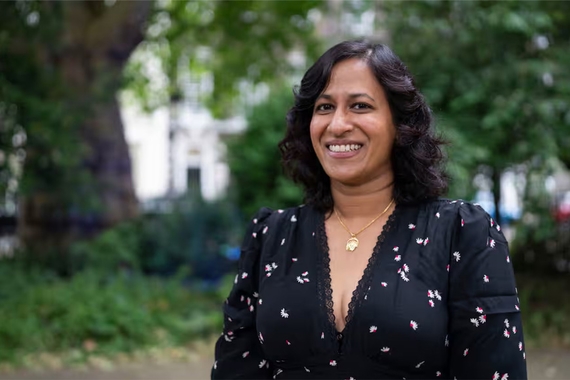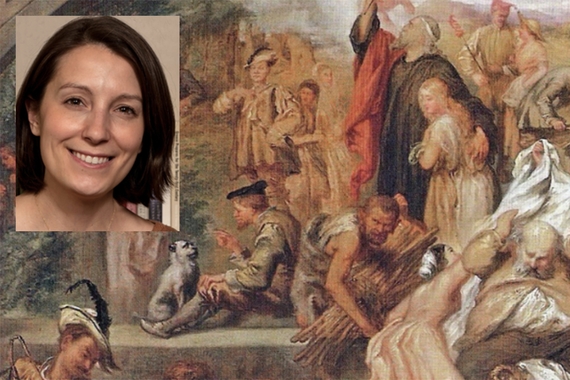Grad Studies: Textiles and the Cause of Women
Elizabeth Howard is a doctoral candidate in English literature who received Graduate Research Partnership Program support in 2019 to prepare a conference paper presentation, “Stitched Verse: Dun Emer Industries, Publication, and the Manipulation of Gender Expectations,” that she gave at the North American Victorian Studies Association Conference in October.
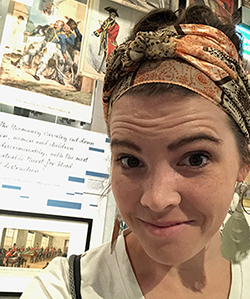
Supported by GRPP funding, I traveled this past July to the Dun Emer archival holdings at the National Library of Ireland, Dublin for the correspondence of botanist Augustine Henry with textile designer Evelyn Gleeson. I was also able to consult the wide-ranging textile and manuscript holdings of the Dun Emer Industries, including their embroidery work and tapestry work at the Yeats Archive in the National Gallery of Ireland, Dublin.
My research in the Yeats Archive was particularly fruitful. I was able to consult a watercolor painting instruction book written Elizabeth Yeats that helped me to better understand Dun Emer’s printed books and handicraft in light of their pedagogical work. Another provocative artifact at the National Gallery was a hand-painted fan by Elizabeth Yates, which also helped me to directly compare Dun Emer’s presentation of text and textile. I was able to consult and transcribe audio interviews with the niece of Elizabeth and Lily Yeats which has introduced me to the manuscript periodicals made by the sewing and printing girls who worked for the Dun Emer Industries. Thanks to the generosity of the head archivist at the Yeats Archive, Andrew Moore, I have a number of leads to follow on the multi-modal labors of the Dun Emer Industries, and I have been able to connect with local experts in the technologies and methods informing linen paper making.
While in Brighton, UK presenting a paper for the Research Society for Victorian Periodicals, I met with other Victorianists who provided further guidance on the project by recommending a careful treatment of class distinctions and kinds/modes of sewing and embroidery.
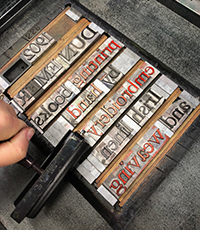
I enrolled in and just completed an introductory course on the letterpress at the Minnesota Center for Book Arts in an effort to better understand Dun Emer’s emphasis on print as a kind of textile work. At the MCBA I was able to work with Caslon Old Face, the type used by the Dun Emer press.
Given the panel discussion following my paper at the North American Victorian Studies Association, I now plan to further my Dun Emer research by studying the direct influence of William Morris and Kelmscott Press on the Dun Emer Press and Industries. I will begin by exploring the specific ways in which the Yeats sisters and Gleeson appropriated and modified Morris’s aesthetic and political arguments to advance the development and preservation of Irish finely crafted hand-arts as well as the profile and cause of women, particularly lower class Irish women.
